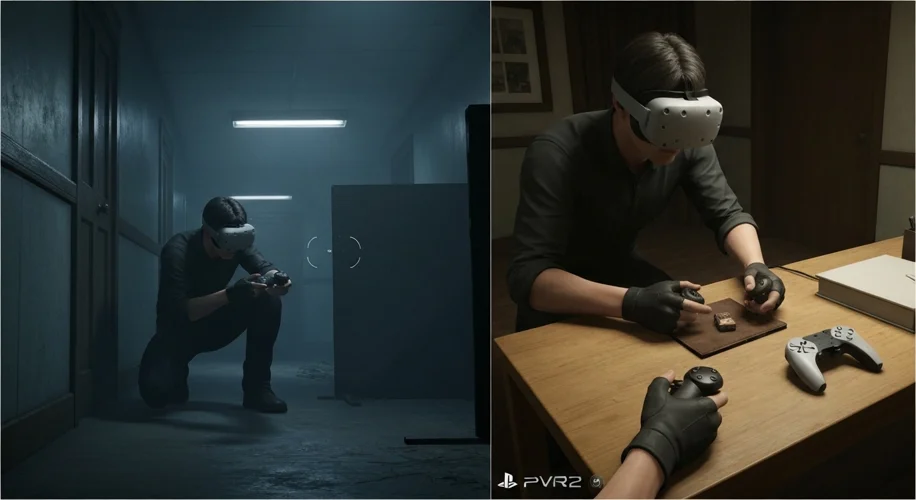Hey everyone, Mateo here!
Today, let’s dive into something pretty cool for Resident Evil fans who are also deep into VR. We’re talking about Praydog’s incredibly popular universal VR mod for the RE Engine games and how its specific interaction mechanics stack up against something like the PlayStation VR2.
Crouching Mechanics: Getting Low to Get Ahead
One of the first things you notice when you jump into a VR game is how movement feels. In a game like Resident Evil, which is all about tension and survival, getting low can be a critical part of not being seen or just finding that perfect cover.
With Praydog’s mod, you’re often looking at using your actual physical body to crouch. If you have the space, dropping down in your play area means your in-game character drops down. This is super immersive, right? It’s that direct, one-to-one mapping that VR is famous for.
On the PSVR2 side, especially in games designed from the ground up for it, you might see similar physical crouching, or sometimes a hybrid approach. Games might offer button presses or stick movements to initiate a crouch if physical space is limited or if the developers want to ensure a consistent experience across different player setups. The goal is usually to offer flexibility while keeping that sense of physical presence.
Grabbing and Interacting: Getting Your Hands on the Action
Interacting with the world is where VR really shines, and Resident Evil is packed with things to pick up, examine, and use.
Praydog’s mod typically uses your VR controller’s motion tracking to simulate hand presence. When you reach out in real life, your virtual hand follows. Grabbing items often involves a trigger pull or a grip button, mimicking the action of your actual hand closing around something. Reloading weapons, picking up keys, or even just opening doors feels more tactile because you’re using your own hands to do it.
The PSVR2, with its excellent Sense controllers, also offers precise tracking and haptic feedback. Games built for it often use sophisticated grab mechanics that might feel incredibly natural, potentially with adaptive triggers that give you feedback on how hard you’re gripping something. The haptics can really sell the feeling of picking up a fragile item or chambering a round.
The Big Picture: Immersion vs. Accessibility
What we’re seeing here is a common theme in VR development: the balance between pure, unadulterated immersion and accessibility for a wider range of players.
Mods like Praydog’s are fantastic because they bring this level of immersion to games that never had official VR support. They leverage the hardware you have and try to translate those actions directly into the game. It’s often driven by the modding community’s passion and technical skill.
Platform-specific VR like PSVR2 usually has the advantage of direct developer support. This means the VR interactions are designed from the start, often with specific hardware capabilities in mind, leading to a potentially more polished or accessible experience for those on that platform. Developers can fine-tune these mechanics to work smoothly for everyone, regardless of their play space or physical ability.
What Does This Mean for You?
Ultimately, both approaches offer incredible ways to experience games like Resident Evil. If you’re a PC VR user with Praydog’s mod, you’re getting a deeply personal, physically engaging experience. If you’re on PSVR2, you’re likely getting a streamlined, developer-crafted journey.
It’s all about what you value most in your VR sessions. Do you love that raw, direct physical connection, or do you prefer a smoother, more curated experience? Either way, VR’s ability to pull us into these worlds is only getting better. Let me know your thoughts in the comments!

